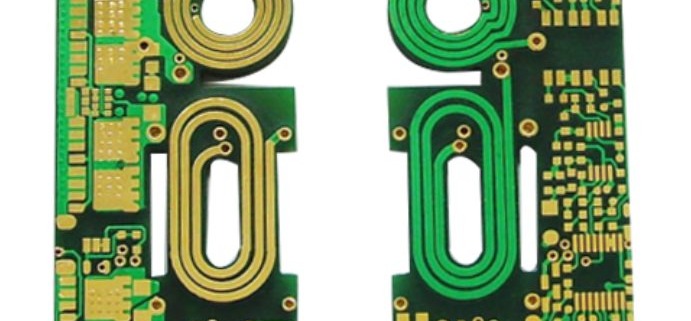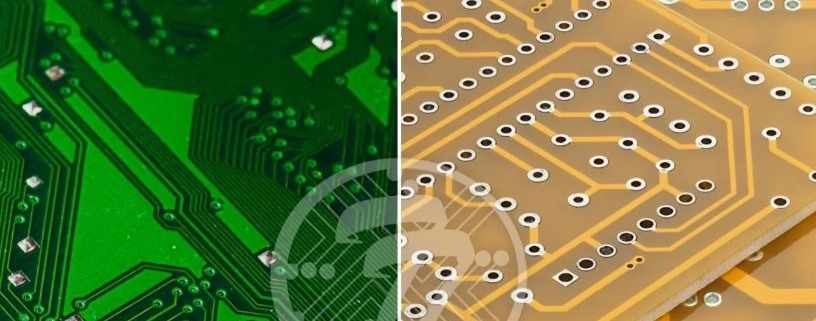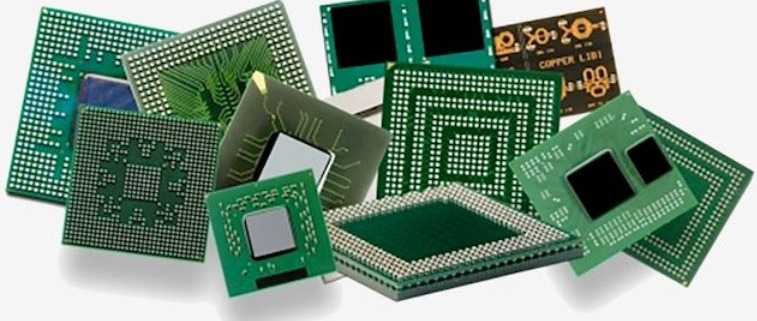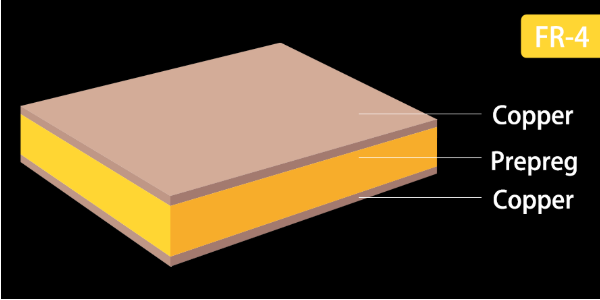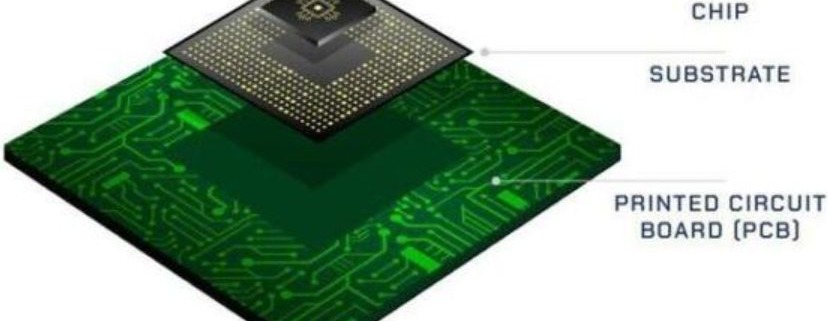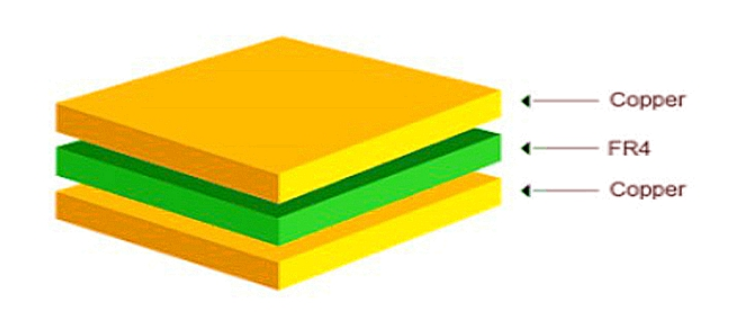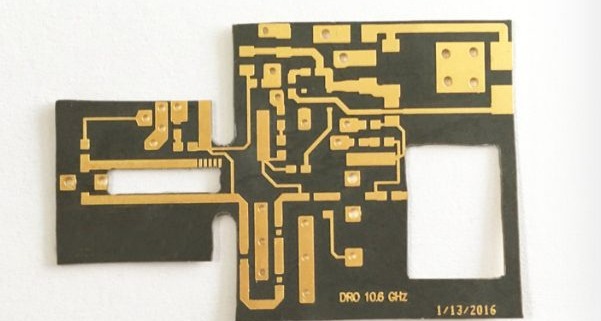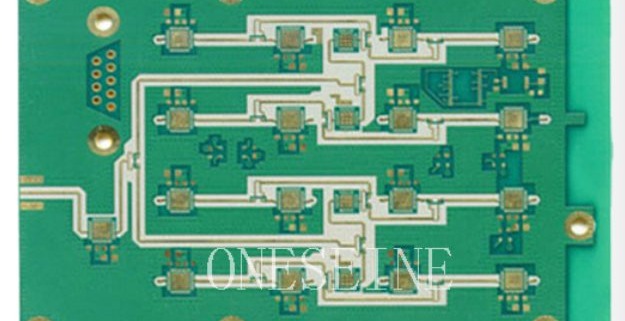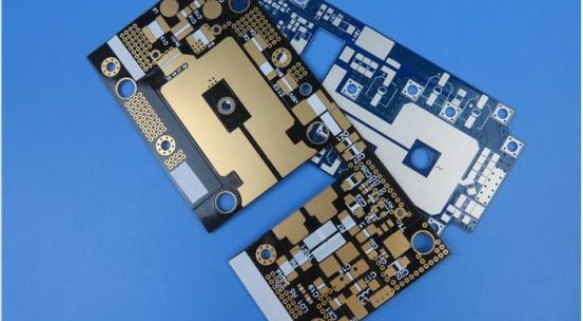Rogers 4003C is a high-frequency laminate material that offers exceptional performance in demanding RF (radio frequency) and microwave applications. Known for its excellent dielectric properties, it ensures minimal signal loss and stable transmission, making it a preferred choice for circuits that require high precision. Gold plating Rogers 4003C PCB combines the unique advantages of this advanced laminate with the superior conductivity and corrosion resistance of gold. This integration enhances performance in high-frequency applications where signal integrity is critical. The low signal loss and high performance of Rogers 4003C make it an ideal material for designing PCBs in industries such as telecommunications, aerospace, and electronics. By using gold plating Rogers 4003C PCB, manufacturers can ensure longer-lasting and more reliable connections, further boosting the material’s already outstanding performance in high-frequency environments.
Printed Circuit Boards (PCBs) are essential components in modern electronics, providing the physical foundation for connecting and supporting electronic components. They serve as the backbone for everything from consumer gadgets to advanced industrial devices. The design and material of a PCB greatly influence its performance, reliability, and cost. Among the most commonly used materials for PCB manufacturing are FR4 and Rogers, each offering distinct advantages for different applications. FR4 is a widely used material known for its durability and affordability, while Rogers is recognized for its superior electrical performance, especially in high-frequency circuits. In this blog, we will compare FR4 Rogers double sided PCB solutions, exploring the differences in material properties, performance characteristics, and suitable applications. Our aim is to help you understand which material is best suited for your specific needs, whether you’re designing consumer electronics or high-performance communication systems.
Printed Circuit Boards (PCBs) are essential components in modern electronics, providing the physical platform for electrical components to connect and function. The material used for a PCB directly influences its performance, durability, and cost. Choosing the right PCB material is crucial for specific applications, as it affects thermal management, electrical performance, and overall reliability. Among the most common PCB materials are FR4 PCB, Rogers PCB, and Aluminum PCB. FR4 PCBs are widely used due to their cost-effectiveness and versatility in general-purpose applications. Rogers PCBs, on the other hand, are designed for high-frequency and high-speed circuits, offering superior signal integrity and performance at elevated frequencies. Lastly, Aluminum PCBs excel in applications requiring excellent heat dissipation, such as LED lighting and power electronics. Understanding the differences between these materials can help engineers select the best option for their specific needs, ensuring optimal performance and reliability in their designs.
In semiconductor chip packaging, the substrate for chips is a crucial component that plays multiple roles in ensuring the functionality and longevity of the chip. Essentially, a substrate is a base material that supports the chip, providing electrical connections between the chip and external circuitry while also offering mechanical stability. The substrate facilitates the transmission of electrical signals, heat dissipation, and physical protection of the delicate semiconductor elements. It serves as the foundation for various packaging types, such as flip-chip, BGA (ball grid array), and IC substrates, each designed for specific performance and thermal requirements. As chip designs become more complex and the demand for high-performance electronics increases, the importance of selecting the right substrate for chips grows. Whether it’s in mobile devices, automotive electronics, or high-performance computing, substrates are integral to ensuring that chips operate efficiently and reliably under different conditions.
FR4 is one of the most common PCB (Printed Circuit Board) materials, widely used in electronic applications such as consumer electronics and communication devices. It consists of woven fiberglass cloth and epoxy resin, which combine to offer both mechanical strength and electrical insulating properties. The composition of FR4, made from glass fiber reinforced epoxy resin, ensures high durability and reliability. The fiberglass provides structural strength, while the epoxy resin offers electrical insulation, making FR4 an ideal material for PCB manufacturing. Understanding the substrate dielectric FR4 is essential, as its dielectric properties significantly influence the performance of the circuit, particularly in high-frequency and high-speed applications, where signal integrity is critical.
A substrate chip is a fundamental component used across various industries, serving as a base material that supports and connects electronic components or biological elements. In the semiconductor industry, substrate chips are crucial for integrating and packaging integrated circuits (ICs), helping with electrical connections and heat management. Beyond electronics, substrate chips also find significant applications in pet care, particularly for reptiles, where coconut-based substrate chips are used to create natural habitats with optimal humidity and temperature levels. This article will explore different types of substrate chips, from IC substrates used in high-tech applications to organic substrates for pet care. We will delve into the distinctions between various substrate chips, their materials, and the technologies that enhance their performance in specific fields. Understanding these differences will help you appreciate the wide-ranging uses and the technological advancements behind substrate chips.
In PCB design, the thickness of the FR4 substrate plays a critical role in circuit performance, manufacturing costs, and overall reliability. Understanding the “standard FR4 substrate thickness” and how to choose the right one is essential for optimizing your design. The substrate thickness affects electrical properties such as signal integrity, impedance control, and thermal management, all of which are crucial for the functionality and longevity of the PCB. Additionally, selecting the right thickness helps in controlling manufacturing costs and ensuring consistency during mass production. This article provides a comprehensive guide to the standard thicknesses of FR4 substrates, factors influencing thickness selection, and best practices for PCB designers. By understanding these aspects, designers can make informed decisions and choose the most suitable “standard FR4 substrate thickness” for their specific applications, ensuring an optimal balance between performance, cost, and reliability in the final product.
RT Duroid 5880 substrate is a high-performance laminate material developed by Rogers Corporation, designed specifically for high-frequency applications. This advanced substrate is widely used in microwave, RF (Radio Frequency), and other sophisticated electronic systems that demand exceptional performance. Known for its low loss and high stability, RT Duroid 5880 substrate is ideal for high-speed, high-frequency communication systems such as satellite communications, radar systems, and wireless networks. Compared to traditional materials like FR4, RT Duroid 5880 offers superior electrical properties, including a low dielectric constant and minimal signal loss, making it the preferred choice for demanding applications. While RT Duroid 5880 is more costly than FR4, its unmatched performance in high-frequency applications justifies the investment, particularly in industries where signal integrity and system reliability are paramount.
The Rogers RT/duroid 5880 substrate is a high-performance PCB material specifically designed to meet the rigorous demands of modern high-frequency and high-speed applications. Manufactured by Rogers Corporation, this substrate is widely used in industries where signal integrity and minimal loss are crucial. Its unique properties make it an ideal choice for RF (radio frequency) and microwave circuit designs. Known for its low dielectric constant and low loss tangent, it ensures that signals travel with minimal attenuation and dispersion. These attributes make it an essential material for applications like 5G communication systems, radar technology, and satellite communications, where high-speed data transmission is critical. With its exceptional performance, this substrate is a preferred choice for engineers designing complex, high-frequency electronic systems that require precision and reliability.
RF-35 substrate is a high-performance PCB material made from PTFE (Polytetrafluoroethylene), designed specifically for high-frequency applications. This advanced material excels in the transmission of RF (radio frequency) and microwave signals, making it a preferred choice for demanding electronic systems. Key characteristics include excellent high-frequency performance, low signal loss, and outstanding stability, which are crucial for reliable signal integrity in fast-paced communication systems.
The RF-35 substrate is widely used in various high-tech fields, particularly in communication devices such as 5G base stations and satellite communications, where minimizing signal loss and maintaining high data transfer rates are essential. Additionally, it finds applications in radio equipment, radar systems, and other RF-dependent technologies, offering superior durability and efficiency in harsh operational environments. With its unmatched performance, this material continues to be a cornerstone of modern electronic systems.
CONTACT US
4th Floor, A3 Building, HuaFeng Industrial Park, GuanTian Village, BeiHuan Road, ShiYan Street, Bao An District, Shenzhen City, Guangdong Province, China
Tel:086 (0)755-8524-1496
WhatsApp: 8615014077679
Skype: Henrychinasz
📧 pcb@alcantapcb.com
CONTACT US
SHIPPING
![]()
CERTIFCATION
![]()
recent articles
 Copper Core PCB vs Aluminium Core PCB Explained2025-09-18 - 7:13 上午
Copper Core PCB vs Aluminium Core PCB Explained2025-09-18 - 7:13 上午 Microwave PCB Manufacturers | RF Design and Fabrication2025-09-16 - 7:58 上午
Microwave PCB Manufacturers | RF Design and Fabrication2025-09-16 - 7:58 上午 Flex PCB Manufacturing Process: Step-by-Step Guide2025-09-10 - 6:59 上午
Flex PCB Manufacturing Process: Step-by-Step Guide2025-09-10 - 6:59 上午 PCB Lamination Process & Sequential Lamination2025-09-04 - 8:10 上午
PCB Lamination Process & Sequential Lamination2025-09-04 - 8:10 上午


